12 of the most unusual Christmas traditions around the world
Here are some of the weird and wonderful ways that countries around the world celebrate the festive season
Your support helps us to tell the story
From reproductive rights to climate change to Big Tech, The Independent is on the ground when the story is developing. Whether it's investigating the financials of Elon Musk's pro-Trump PAC or producing our latest documentary, 'The A Word', which shines a light on the American women fighting for reproductive rights, we know how important it is to parse out the facts from the messaging.
At such a critical moment in US history, we need reporters on the ground. Your donation allows us to keep sending journalists to speak to both sides of the story.
The Independent is trusted by Americans across the entire political spectrum. And unlike many other quality news outlets, we choose not to lock Americans out of our reporting and analysis with paywalls. We believe quality journalism should be available to everyone, paid for by those who can afford it.
Your support makes all the difference.When you think about it, Christmas often seems like one wacky tradition after another, from bringing trees indoors and decorating them in rather loud accessories to serving up some pungent Brussels sprouts next to much tastier plates.
The UK is rather set in its ways when it comes to celebrating Christmas, but compared to other countries throughout the world, Britain’s Christmas traditions – whether that’s decorations, cuisine or present giving – are rather tame.
Other countries don’t waste time arguing over trivial matters like when is it too early to begin decorating the house or considering swapping turkey for a beef joint at a Christmas dinner. Instead, they’re off throwing around their shoes, hiding cleaning equipment, decorating their trees with spider’s webs or goats, and dining out at KFC.
From Catalonia to Caracas, the world has a slew of Christmas traditions, with some dating back hundreds of years, some barely decades, but they have all become an intrinsic part of local Christmas traditions.
In celebration of these festive eccentricities, we’ve rounded up 12 of the most unusual customs from across the globe.
Read more: Best Northern Lights holidays, short trips and packages
Germany and Austria - The Krampus
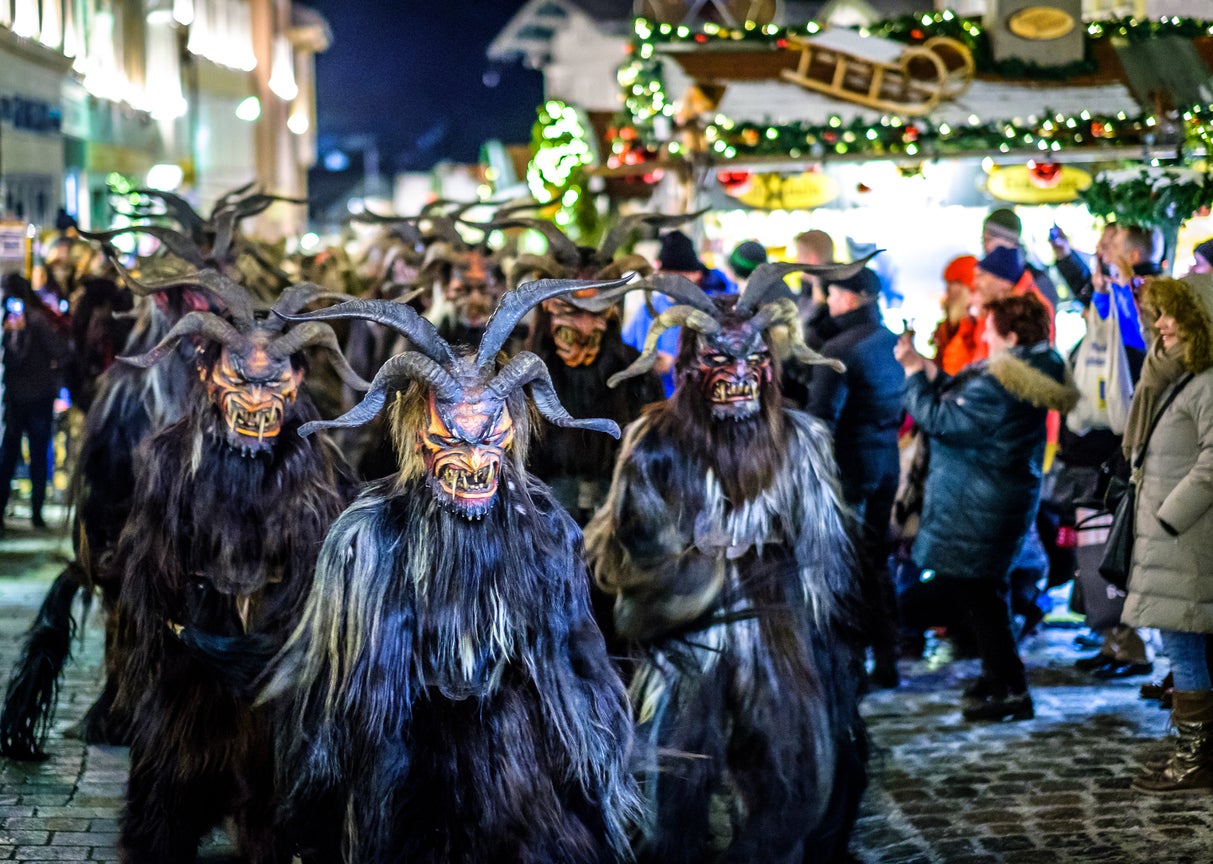
In Austro-Bavarian Alpine folklore, the Krampus is Father Christmas’s scary friend, a devilish creature who punishes naughty children throughout the festive period. The mythical beast, who is hairy, with hooves and large horns, is ‘celebrated’ every year on 5 December in many cities throughout Germany and Austria in a festival named Krampusnacht, often marked with a parade in which hundreds dress up as Krampus and chase each other through the streets.
Catalonia - Defecating logs
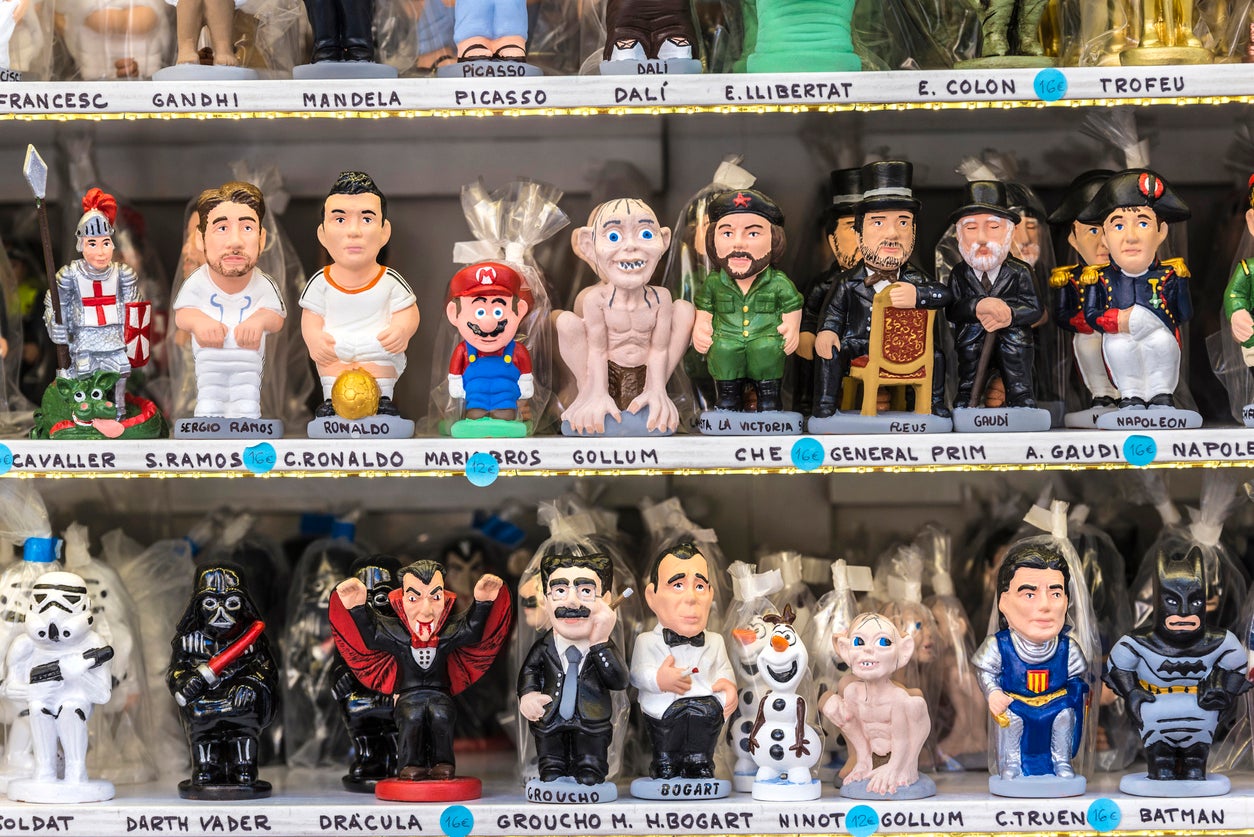
There are a couple of strange Catalan traditions, one of which is the caga tio or “defecating log”. In the fortnight leading up to Christmas, a grinning creature is created out of a small log and placed on the dining room table. The log must be fed every day with fruit, nuts, and sweets, before – on Christmas Eve – it’s beaten with sticks, excreting its goodies. Another faecal-themed Catalan custom is a caganer, a small defecating figurine, which traditionally appears in nativity scenes. In more recent years, caganers that are sold in stores and Christmas markets throughout the region have taken the form of just about any celebrity, from Donald Trump to your least favourite rival footballer.
Read more: Christmas holidays you must do if you’re single and over 50
Caracas - Skating to church
In Caracas, the capital of Venezuela, revellers travel to early-morning church services on roller skates throughout the festive period. Roads are even closed off especially on mornings between 16 December and Christmas Eve.
Japan - Fried chicken

Christmas isn’t a national holiday in Japan but that doesn’t stop a large number of people from celebrating the festival. Father Christmas, or Santa Kurohsu, is said to have eyes in the back of his head to keep an eye on naughty children, while Japanese Christmas cake is usually made up of sponge, whipped cream, and strawberries. In a further spin on Christmas food, many Japanese people head to branches of KFC on or around Christmas Day, with the week leading up to 25 December reportedly being the chain’s most profitable week of the year in Japan.
Portugal - Remembering the dead
In Portugal, a more religious Christmas is also a time for remembrance, as families set extra places at the dining table on Christmas Eve (or sometimes on Christmas morning) for deceased relatives. The practice is called consoda and is thought to bring the family good luck, with a meal, consisting of salted cod, potato and a range of regional desserts.
Read more: The best holidays to book for December, from sun-drenched St Lucia to Krakow’s Christmas markets
Czech Republic - Shoe throwing
Over Christmas, Czech women use a clever trick to predict their love lives for the coming year. Unmarried women stand with their backs to their front doors and toss shoes over their shoulders. If a shoe lands with its toe pointing towards the door, the woman may very well be planning a wedding within the next 12 months.
Norway - Hiding your brooms
In Norway, it’s thought that Christmas Eve coincides with the arrival of evil spirits and witches. In a bid to protect themselves, families hide all their brooms and mops before they go to bed.
Ukraine - Spider webs on trees
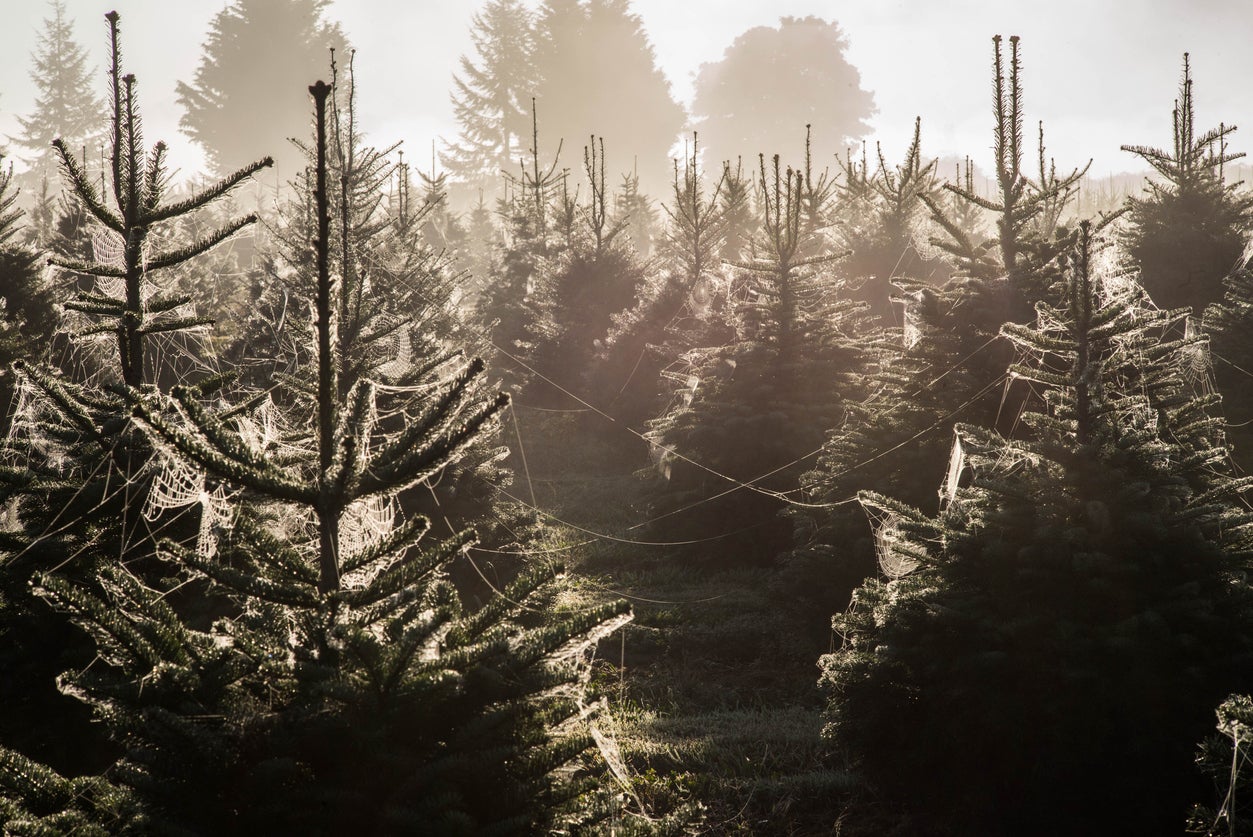
Ukrainian Christmas trees are traditionally decorated with a fake spider and web. The custom, which is said to bring good luck, stems from an old wives’ tale about a poor woman who could not afford to decorate her tree. She woke up on Christmas morning to find a spider had covered it in a glittering web.
Read more: Where is hot in December? Best holiday destinations for winter sun
Greenland - Whale skin for dinner
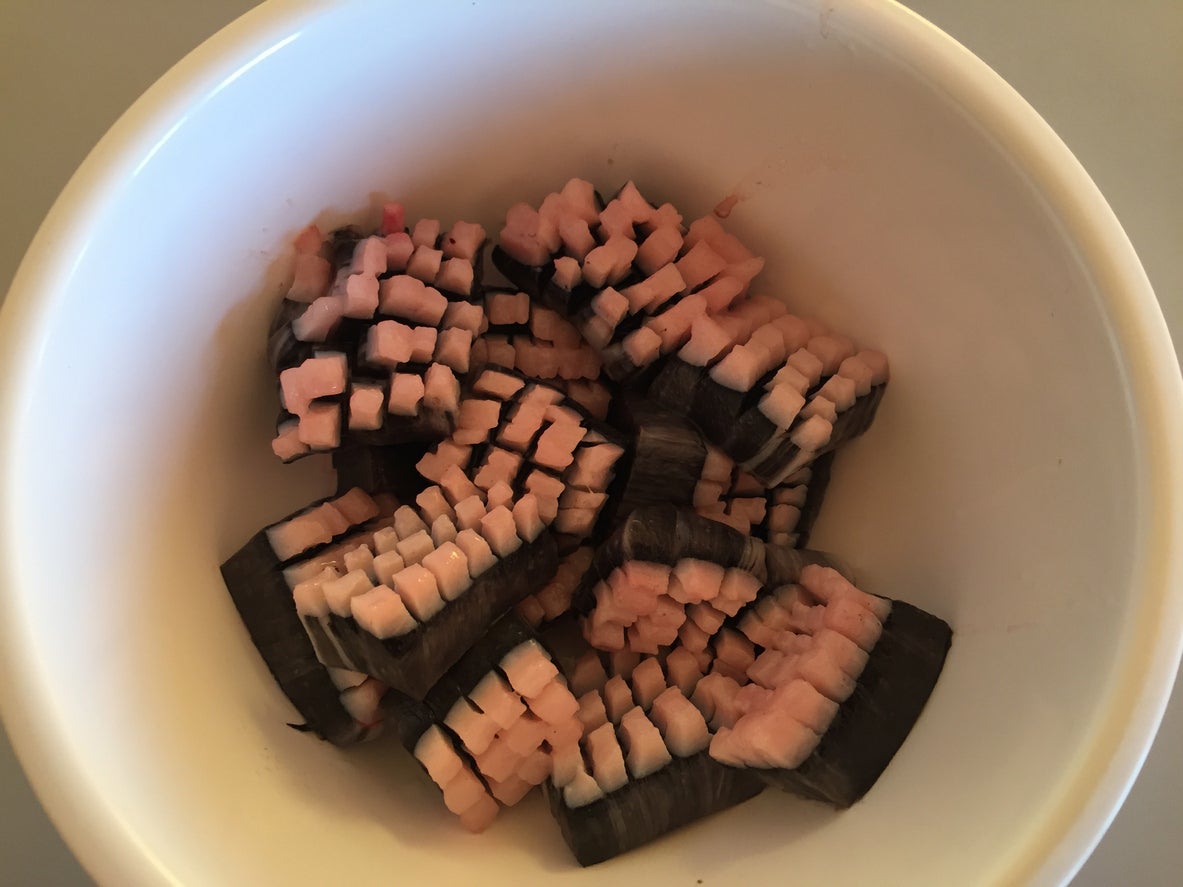
If you think sprouts are bad, you should try one of Greenland’s Christmas delicacies. Mattak – raw whale skin with blubber – is one. Another is kiviak, which is when an auk (a small bird) is wrapped in seal skin, buried for several months, and then eaten once decomposed.
India - Mango trees
Only about 2.3 per cent of the population of India are Christians, but that still works out as about 25 million people. The day is celebrated with midnight mass and present-giving, but in the absence of fir trees or pine trees, banana trees and mango trees are decorated instead.
Read more: The best Christmas markets in the world
Scandinavia - Yule goats
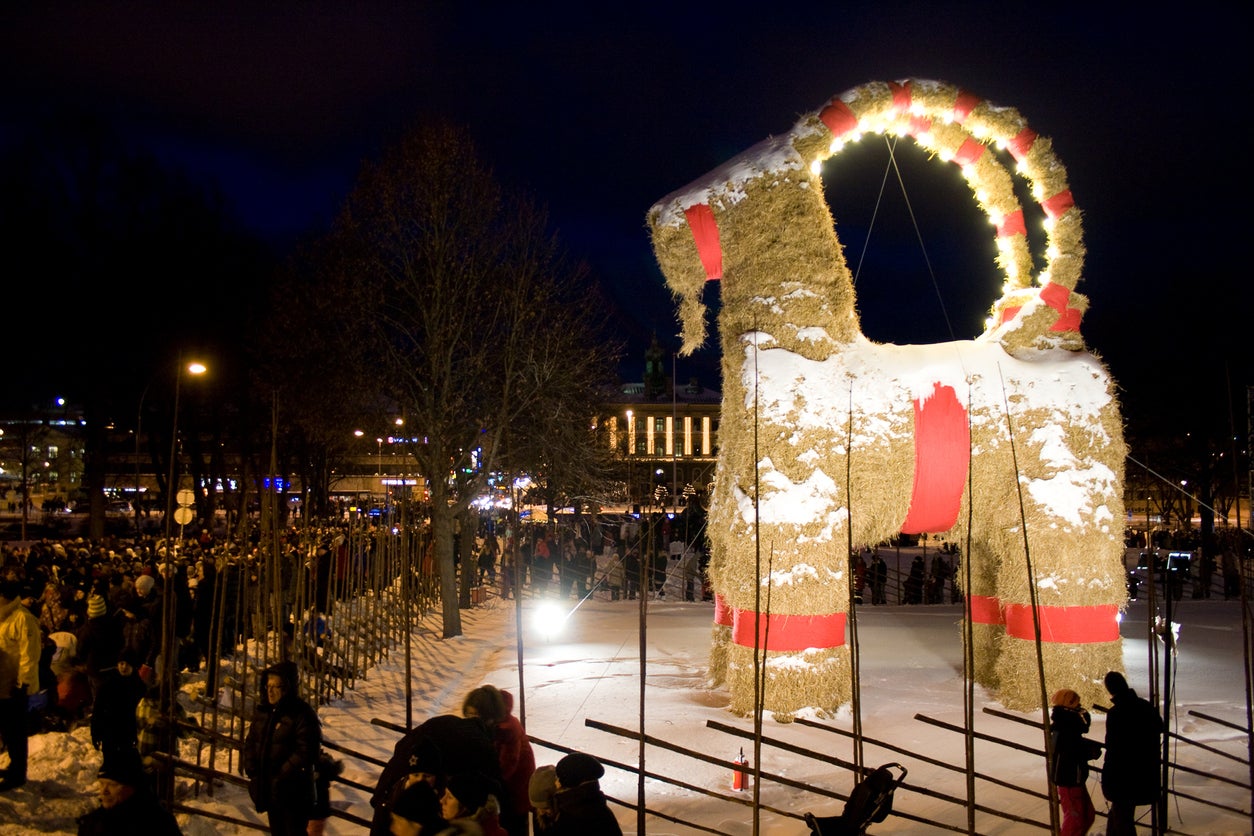
A traditional Scandinavian Christmas symbol, the Yule goat was believed to have been a spirit that would appear before the festive season to make sure that celebrations were carried out correctly. In later centuries, the goat’s role was as a gift-giver, before eventually being replaced by Father Christmas. Nowadays, small goats made out of straw are popular tree decorations throughout Scandinavia.
Slovakia - Pudding throwing
In Slovakia, it’s a Christmas dinner tradition for the most senior member of the family to throw some of the pudding (usually made from milk, bread, poppy seeds and something sweet) onto the ceiling. The amount that sticks indicates the luck everyone should receive in the coming year.
Read more: Is it possible to do Lapland on a budget? A guide to visiting Santa without breaking the bank
Join our commenting forum
Join thought-provoking conversations, follow other Independent readers and see their replies
Comments